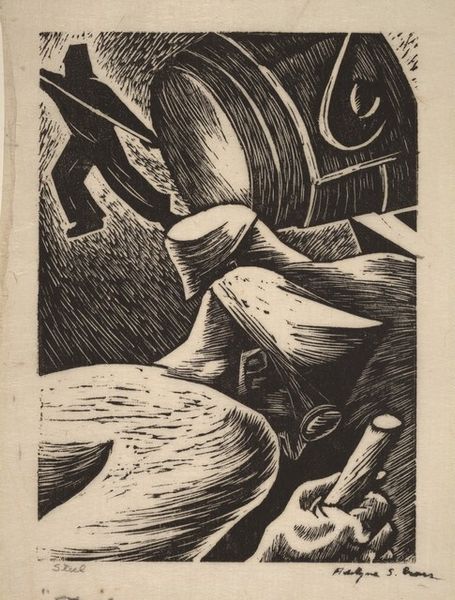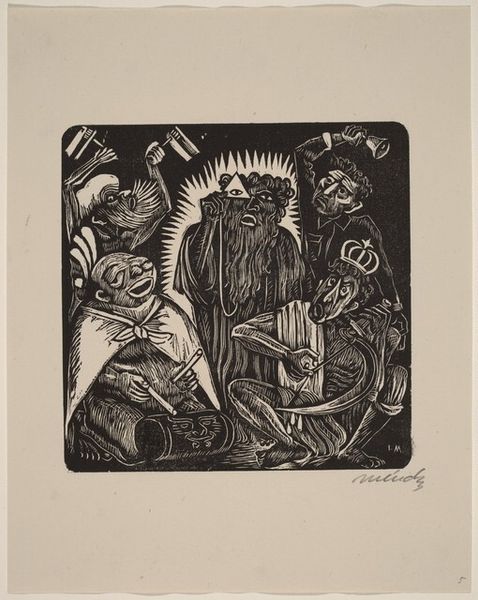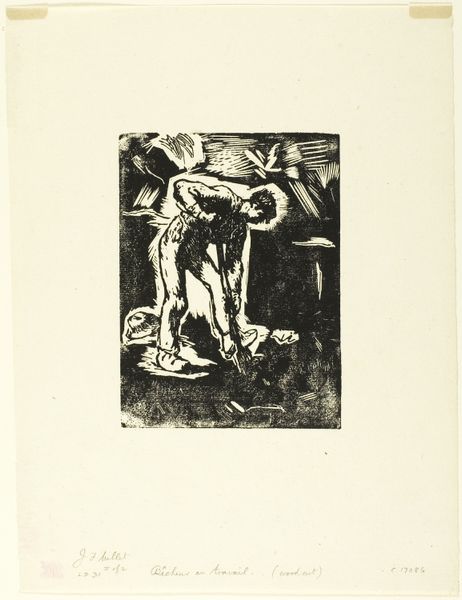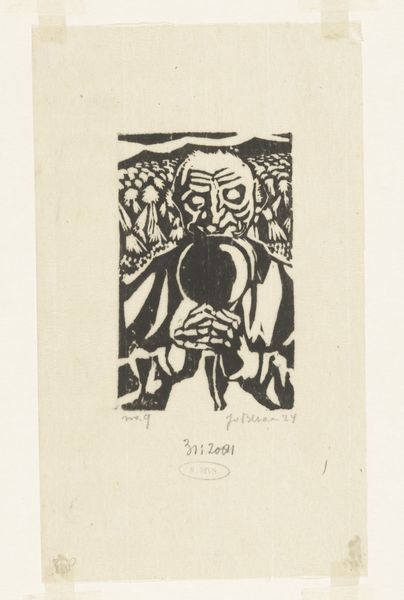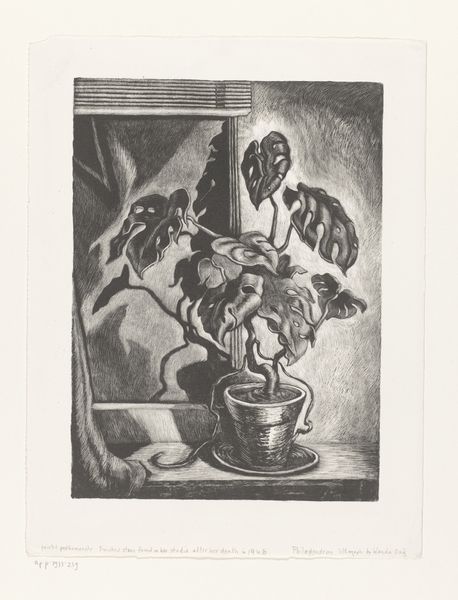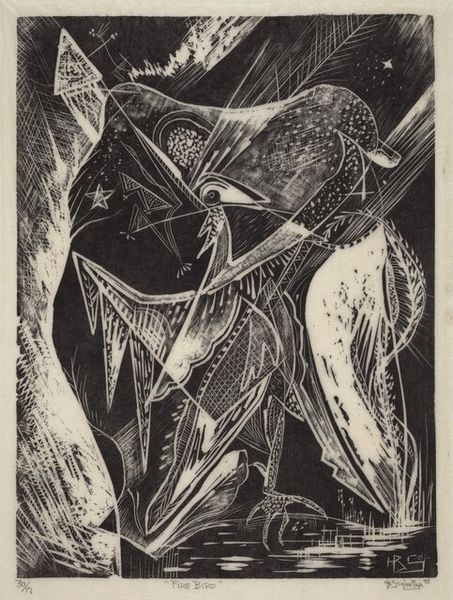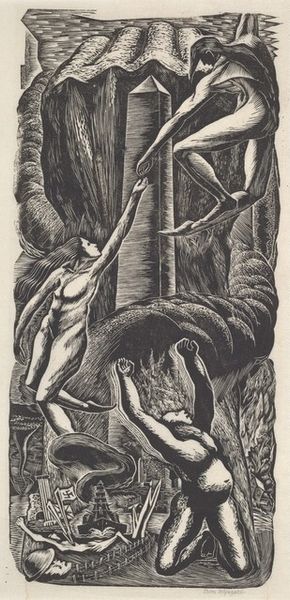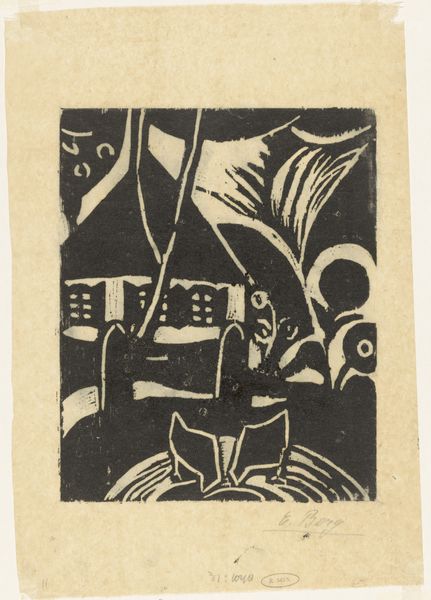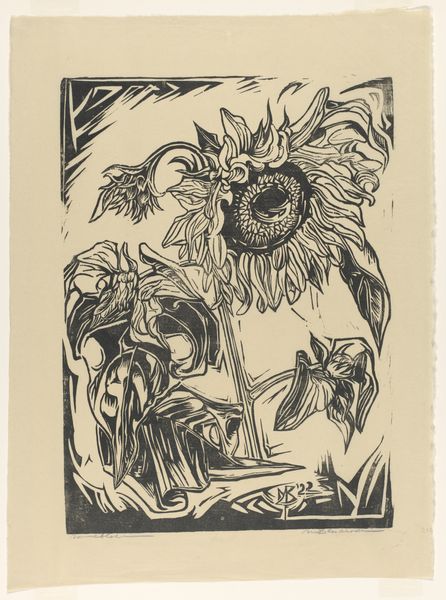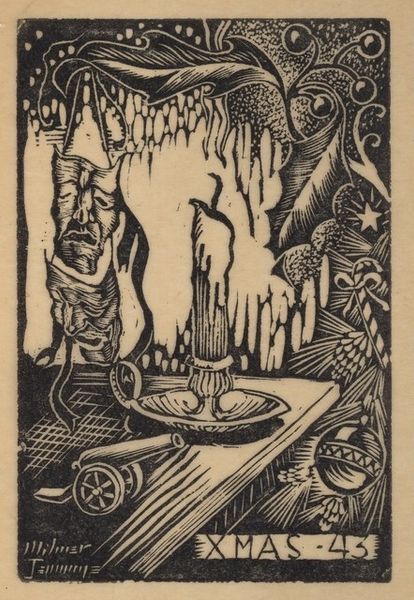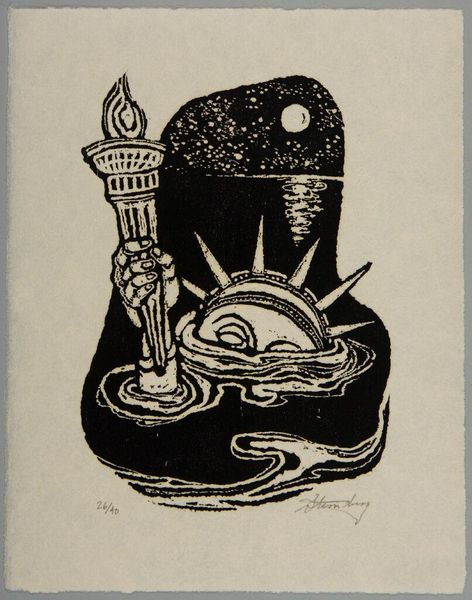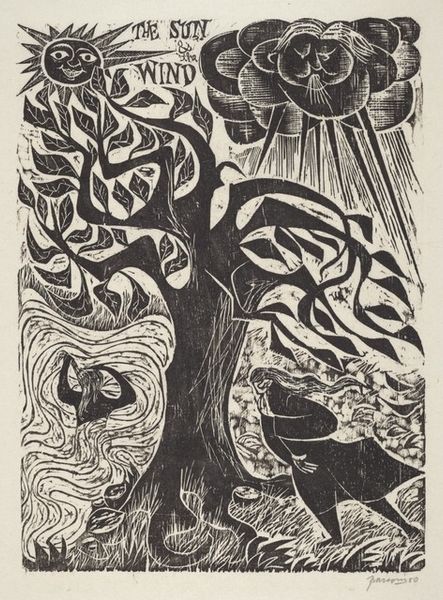
Dimensions: Image: 152 x 104 mm Sheet: 215 x 159 mm
Copyright: National Gallery of Art: CC0 1.0
Curator: This is Leona Pierce Frasconi's linocut print, "Budget 1950," created in 1950. It’s a stark black and white image; what are your initial thoughts? Editor: My immediate response is one of disquiet. There's a strong contrast between the darkness and light, creating a feeling of unease, as if something is fundamentally unbalanced. The composition itself feels… heavy. Curator: Exactly. Frasconi used her art as a form of activism, critiquing the societal issues she witnessed. This piece, in particular, comments on the post-war American budget. Notice the scales of justice; on one side, a bird symbolizing peace balances precariously above symbols of community prosperity. Editor: And on the other side, we have the imposing eagle, laden with chains, weighed down by what appears to be the machinery of war and a smattering of silhouetted figures. It’s such a powerful representation of how resources are distributed. Who exactly is dictating that the American dream is outweighed? Curator: The print was produced and distributed during a period of intense Cold War anxiety, of course, when resources were diverted heavily toward military spending. So the heavy, chained eagle represents not just a general militarization, but very directly an America caught in those priorities. Editor: Right. I find the crowd at the bottom quite affecting as well. Are they cheering? Pleading? Are they meant to signify the people caught in the imbalance you described? Curator: That ambiguity, I think, is central to Frasconi's technique. They're actively participating in this drama but powerless to affect the outcome. The imagery connects to those intersectional themes of social justice, gender inequality, and racial identity because ultimately these disproportional impacts are felt the most acutely by certain marginalized groups within America at the time. Editor: The stark, high contrast adds a certain visual punch and would have rendered itself perfectly for mass production. This could reach many more people via more accessible mediums to truly activate. Curator: That was Frasconi’s purpose; she truly aimed to instigate public discussions of social change. This linocut is a compelling statement. Editor: Yes. It continues to prompt critical questioning of how national budgets reflect—or fail to reflect—social priorities.
Comments
No comments
Be the first to comment and join the conversation on the ultimate creative platform.
